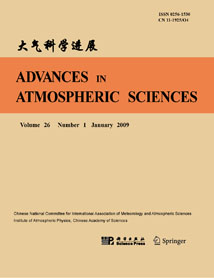Dependence of the AGCM Climatology on the Method of Prescribing Surface Boundary Conditions and Its Climatological Implication
- Manuscript received: 1999-10-10
- Manuscript revised: 1999-10-10
Abstract: By using IAP 9L AGCM, two sets of long-term climatological integration have been per-formed with the two different interpolation procedures for generating the daily surface boundary conditions. One interpolation procedure is the so-called “traditional” scheme, for which the daily surface boundary conditions are obtained by linearly interpolating between the observed monthly mean values, however the observed monthly means cannot be preserved after interpolation. The other one is the “new” scheme, for which the daily surface boundary conditions are obtained by linearly interpolating between the "artificial" monthly mean values which are based on, but are dif-ferent from the observed ones, after interpolating with this new scheme, not only the observed monthly mean values are preserved, the time series of the new generated daily values is also more consistent with the observation. Comparison of the model results shows that the differences of the globally or zonally averaged fields between these two integrations are quite small, and this is due to the compensating effect between the different regions. However, the differences of the two patterns (the global or regional geographical distributions), are quite significant, for example, the magni-tude of the difference in the JJA mean rainfall between these two integrations can exceed 2 mm/day over Asian monsoon regions, and the difference in DJF mean surface air temperature can also exceed 2oC over this region. The fact that the model climatology depends quite strongly on the method of prescribing the daily surface boundary conditions suggests that in order to validate the climate model or to predict the short-term climate anomalies, either the " new* interpolation scheme or the high frequency surface boundary conditions (e.g., daily or weekly data instead of the monthly data) should be introduced. Meanwhile, as for the coupled model, the daily coupling scheme between the different component cli?mate models (e.g., atmospheric and oceanic general circulation models) is preferred in order to partly eliminate the “climate drift” problem which may appear during the course of direct coupling.
-
Keywords:
- Linear interpolation,
- Model climatology. Atmospheric general circulation model (AGCM),
- Surface boundary condition















 AAS Website
AAS Website 
 AAS WeChat
AAS WeChat 
 DownLoad:
DownLoad: